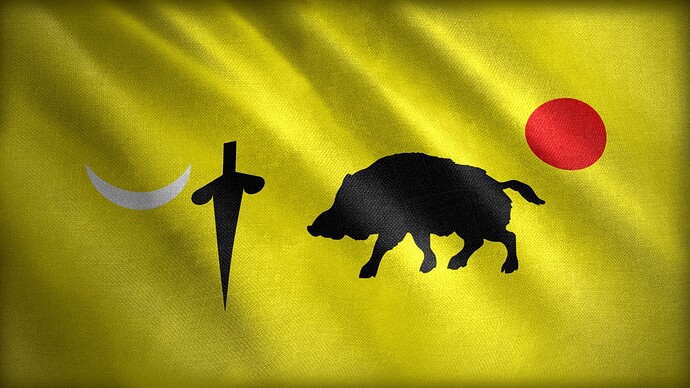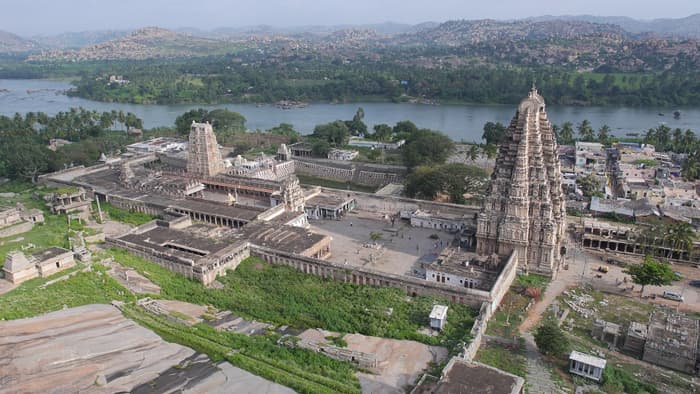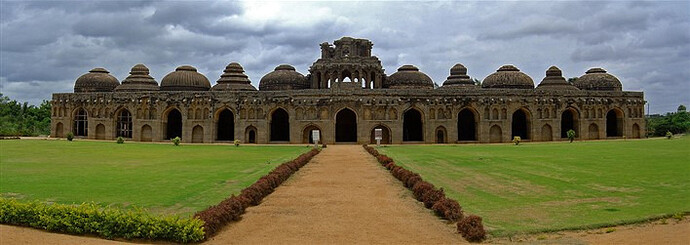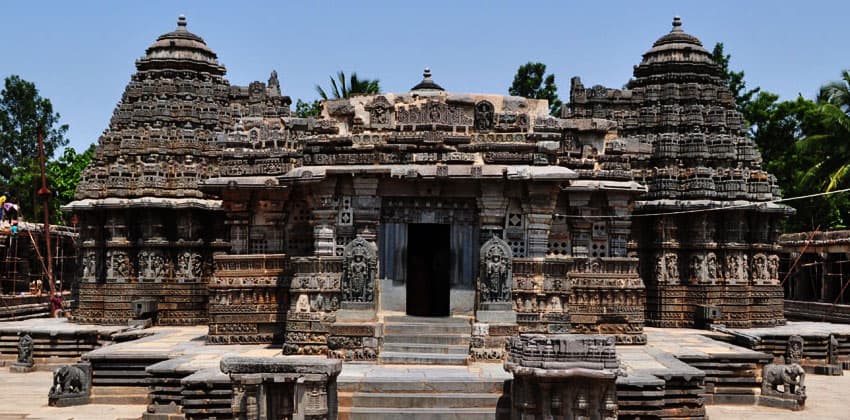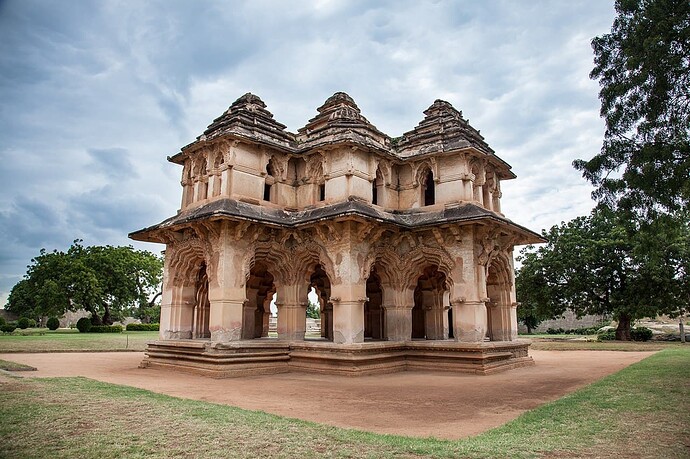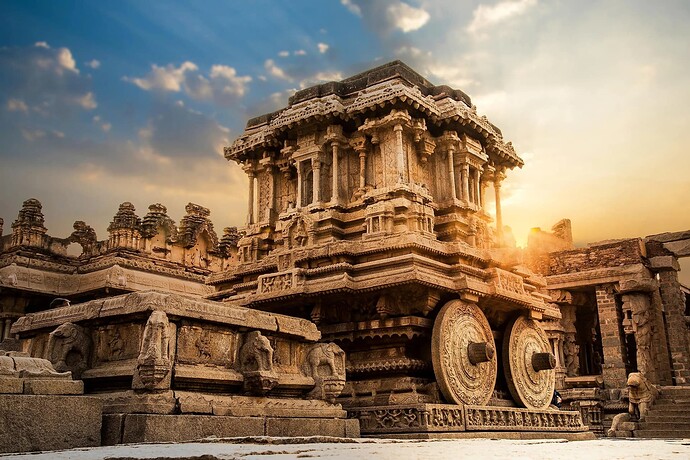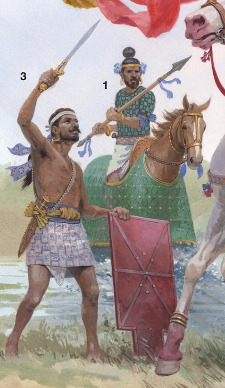Hi everyone, I present to everyone my second civ concept: The Vijayanagara Empire. It doesn’t seem to get talked about a lot, but given their natural rivalry with the Northern Sultanates (represented by current Delhi Sultanate) as a native Hindu civ, and their late-medieval presence (which the devs seem to prefer), I actually think they have a strong chance of getting in. Full disclosure: I am not Indian or Hindu, but I spent countless hours researching to try and give every little aspect of this civ both proper historical inspiration and uniqueness. Once again, no actual numbers are included - just concepts - because it’s impossible to know what would be balanced without playtesting.
The Vijayanagara Empire
Monuments, Elephants, Infantry
973 - 1565
Difficulty: 1/3
Background and Inspiration:
A New Power: Under constant attacks from the Islamic Sultanates to the north, the Deccan Plateau in South India was transformed when the Vijayanagara Empire rose up from the turmoil to become the new dominant power in the subcontinent. Founded by the two brothers Harihara and ##### Raya in 1336, the empire reached its peak in the early 16th century before finally being utterly defeated and destroyed in the Battle of Talikota in 1565. Due to its late foundation, it is represented in AOE4’s earlier ages by its influential precursor empire in Karnataka: the Hoysala Empire (and to a lesser extent the Western Chalukya empire to which the Hoysalas were subordinates for a time).
The City of Victory: The Empire was named after its capital, Vijayanagara - the city of victory. “The city is such that ‘eye has not seen nor ear heard of any place resembling it upon earth’”. Renowned for its grandeur and beauty by visitors from Europe and the Middle East, by 1500 it was the second most populous city in the world after Beijing, ‘large as Rome’, and it was said to have over 100k houses, 4000 temples, waterworks and irrigation, gardens, and bazaars, all built with the abundantly available local granite. It, along with the Hoysala Empire before it, left a lasting legacy of Hindu architecture and ushered in a golden age of fine arts and literature, especially in the Kannada and Telugu languages.
A Militarized Empire: Whereas the Bahmani sultan was known as the ‘Lord of Horses’, the King of Vijayanagara was known as the ‘Lord of Men’. The military of the Vijayanagara Empire was primarily driven by its countless infantry armies, with some estimates reaching as high as 700 thousand, but more realistically between 150 - 250k. In South Indian fashion, infantry fought almost completely unarmored with only shields, sometimes as big as the whole body, for defense. Daggers, including the uniquely Indian, horizontally held ‘punch-dagger’, were an important, traditional weapon. Like other Indian empires, Vijayanagara also made extensive use of elephants, and although native cavalry was generally considered of poor quality, it did also import higher quality Arab and Persian horses and employ Turkic and Portuguese mercenaries. Although its uptake of gunpowder was not as fast as the Islamic Sultanates in the north, by the Battle of Talikota, Vijayanagara had its own extensive artillery.
Civilization Design and Concept:
Musical Score: The Carnatic music genre that Vijayanagara was very influential in developing would provide a perfect ambient theme for this civilization.
Language: The primary language should be Kannada, but it would be really interesting if in later ages, you could hear Telugu spoken as well in increasing amounts, if only by villagers and poets to reduce the amount of recording needed. Religious units could speak Sanskrit.
Architecture: Early architecture would be based on Dravidian-style Western Chalukya and Hoysala style, with detailed architecture finished with intricate carvings and designs. Later buildings could display the Vijayanagara architecture with larger Chola-inspired gopura and Islamic features influenced by their northern neighbors.
Concept: Throughout all my research the common theme I ran into was the grandeur and beauty of the city and its focus on architecture. So I wanted to turn the civ into a true city-building civ, with many unique buildings and a focus on building and expansion. I felt that this focus on city-building would be well suited to new, more casual players and should be complemented by mostly passive bonuses, similar to French and English. Due to their lack of armor, infantry have additional mechanics to improve survivability. I deliberately avoided having many Tamil influences in this civ because of the possibility for a separate Chola civ.
Bonuses
-
Build monuments to age up. Each monument costs ¼ the cost of a normal age up, builds in ¼ the time, and costs stone instead of gold. Three monuments are required to unlock the normal landmark, which costs the same as a monument but has the normal age up bonuses and size. Destroying a monument does not reset age-up progress.
-
Temples generate passive gold for each villager within a certain radius. Similar to Hunting cabins, the radii cannot overlap.
-
Food gathering upgrades are free.
-
Spearmen and Archers are cheaper and carry daggers for improved combat vs other melee infantry.
-
Blacksmith is missing all armor upgrades and Siege Engineering.
-
Cannot Kill Mali Cows
Influence: Temples and monuments extend influence. Dropoff buildings within influence zones return a small amount of extra resources per dropoff.
Unique Features
Buildings
-
Stable (II, 150W): Not unique per se, but unique looking. The stable design should incorporate elephants, not the standard horse corral style.
-
Mercenary Camp (IV, 150W, 150G): Remember this? I brought it back from my Hungarian civ design.
- Portuguese Arquebusier Company - shipment of Portuguese Mercenaries
- Turkic Heavy Cavalry Company - shipment of fully upgraded Elite Lancers
-
Temple (III, 150S): The Vijayanagar version of a monastery/mosque.
-
Monument (All ages, various costs): Unique, cosmetic buildings built as part of Vijayanagara age up. There can be more monuments than are needed for age up, and the monument will be chosen randomly each time. These monuments will be smaller to differentiate them easily from landmarks.
- Dark Age: 2x2 small shrines, statues and Hero Stones (Traditional memorials found in large concentrations in Karnataka)
- Feudal Age: 2x2 gardens, baths, Nandi Shrines, Step Wells
- Castle Age: 3x3 Vijayanagara/Hampi monuments, such as Ganesha statue, Narsimha statue, Garuda stone chariot shrine, Lotus Mahal
Unit Roster
Missing from ‘Standard’ Roster: Man-at-arms, Crossbow, Lancer/Knight, Mangonel, Culverin, Ribauldequin, Battering Ram, Siege Tower
Ships: Dhow, Explosive Dhow, Kotiya (Springald Ship), Patamar (Cannon Ship)
Unique Units
-
Royal Elephant (II, Stable): Chain-mail armored elephant with high melee armor and 2x javelin-thrower riders and AOE tusk attack. Bonus vs armored units. Weak vs Spears and anti-armor units. Has Veteran and Elite upgrades. Can carry (but not pick up) relics. While carrying a relic, it provides an armor buff to surrounding infantry.
-
Yantra Elephant (III, Stable): Elephant mounted with stone throwing sling/siege equipment (yes this was actually a thing!) Acts as a weaker, faster firing, more mobile mangonel. Bonus vs ranged units, weak vs cavalry and spearmen (if they get close). Has food cost, but less wood/gold cost.
-
Kshatriya(III, Barracks): Fast, all-purpose light infantry with sword and very large shield that covers the entire body and gives high pierce armor. Can use a special ability to block all damage for a short period of time, but cannot attack during this period. Strong vs archers and spearmen, weak vs cavalry and MAA.
-
Haridasa (III, Temple): Vijayanagara religious unit. Can also be called ‘Brahmin’ as a more general Hindu term, but Haridasas were quite specific to the Vijayanagara empire.
-
Musketeer (IV, Archery Range): Vijayanagara hand cannoneer.
-
Portuguese Mercenary (IV, Mercenary Camp): Arquebusier (gunpowder infantry) with a ‘Crack Shot’ cooldown ability that gives a one time attack with an anti-siege bonus.
Technologies
-
Bhakti (IV, Temple): Replaces ‘Piety’ with the same effect.
-
Puja Rituals (IV, Temple): Replaces ‘Tithe Barns’ with the same effect.
-
Elephant Husbandry (IV, University): Replaces Biology. Increases Elephant HP and speed.
-
Supply Lines (IV, Stable): Replaces adjustable crossbars. Same effect but for Yantras.
-
Tusk Knives (IV, Blacksmith): Increases Royal Elephant tusk attack and gives attack bonus vs light infantry.
-
Elephant Caparisons (III, Blacksmith): Increases elephant pierce armor.
-
Improved Howdah (IV, Stable): Adds extra javelineers to Royal Elephant.
-
Brahmin Commanders (IV, Temple): Royal elephants carrying relics can take sacred sites and use convert ability.
-
Katar Punch-Dagger (III, Barracks): Increases spearman and archer dagger attack damage
-
Irrigation Systems (III, Mill): Farmers do not need to drop off food at a mill. Temple and monument influence increases gather rate rather than drop off amount.
-
Hatha Yoga (Age II, Temple of Shiva Landmark): Meditation effect of landmark is improved
-
Portuguese Alliance (IV, Vittala Bazaar Landmark): Portuguese Mercenaries increase damage of nearby bombards.
-
Imported Horses (IV, Vittala Bazaar Landmark): Horseman and Lancer hp and armor increased.
-
Spice and Perfume Trade (IV, Vittala Bazaar Landmark): Wood-to-gold exchange rate cannot drop below 1:1
-
Heavy Keels (II, Dock): Transport ships have increased capacity
Landmarks
Feudal: Feudal combat boost vs Fast-Castle boost
-
Temple to Shiva: Acts as a temple. When built, infantry that are not in combat and in the radius of a temple or monument heal and have increased HP for a period of time after leaving the radius.
- Inspired by the Hoysala Hoysaleswara Temple in Halebidu
-
Temple to Vishnu: Acts as a temple. Grants line of sight on all relics and sacred sites. Reduces cost of Feudal Age and Castle Age Monuments and Temples
- Inspired by the Hoysala Chennakesava Temple in Belur
Castle: Immediate power spike vs defensive, resource safety
-
Royal Elephant Stables: Spawns a number of Royal Elephants on completion and upgrades elephants to Veteran status. Acts as a stable with increased production speed.
- Inspired by the Vijayanagara elephant stables, still standing in Hampi today.
-
Moon Hill Fort: Acts as a keep with trees around it that can be harvested for wood and respawn over time. (Similar to Twin-Minaret Madrasa)
- Inspired by Chandragiri Fort
Imperial: Two landmarks which offer different ways to improve your Imperial age army composition.
-
Mahanavami Dibba: Grants Mahanavami Festival ability which costs food to activate. When active, it temporarily increases temple gold generation rate from civ bonus and temporarily increases population space.
- Inspired by the large ceremonial platform of the same name in Vijayanagara where grand events such as the Mahanavami festival, the most famous, were celebrated by the king.
-
Vittala Bazaar: Acts as a market with improved trading rates. Decreases cost of mercenary units. Contains unique technologies.
- Inspired by the large bazaar at Vittala temple, in Vijayanagara
Wonder
- Virupaksha Temple in Vijayanagara
